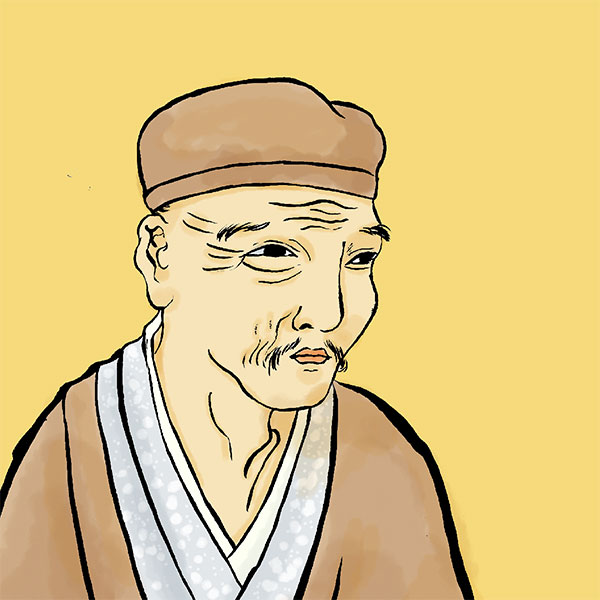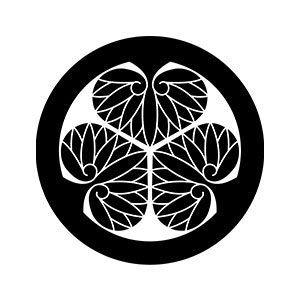- Owari DomainThe Owari Tokugawa family ruled Owari throughout the Edo period.
- The Owari domain was ruled by the Owari Tokugawa family, whose founder was Yoshinao Tokugawa. The Owari Tokugawa family was the leading of the three families that would produce a successor when the Shogun family lost its successor. In addition, the relationship with the shogun family was deep, and some feudal lords were close to the shogun or rebelled against him.

Nagoya CastleAichi Prefecture, Nagoya City
- spring
- summer
- autumn
- winter
- TOP
- Chubu
- Aichi prefecture
- Nagoya Castle
| Other name | Kinshachi Castle, Kinjo, Yanagi Castle, Kameya Castle, Hosa Castle |
|---|---|
| castle construction | 1609 |
| address | 1-1 Honmaru, Naka-ku, Nagoya, Aichi Prefecture |
| telephone number | 052-231-1700 |
| Opening hours | 9:00 a.m. to 4:30 p.m. (Entrance to Honmaru Palace is until 4:00 p.m.) |
| closing day | December 29th to 31st, January 1st |
| Admission fee | Adults 500 yen / Nagoya city seniors 100 yen / Junior high school students and under free |
Nagoya Castle is so famous that it has been sung in folk songs since the Edo period, ``Owari Nagoya is a castle.'' It has other names such as ``Meijo'' and ``Kinshachijo,'' and is currently counted as one of Japan's 100 Famous Castles. Nagoya Castle has a long history, and it is said that Oda Nobunaga was also born here.
- Access to Nagoya Castle
- 5 minutes walk from Exit 7 of Shiyakusho Station on the Meijo Line.
HISTORYAbout Nagoya Castle
The current castle was built by order of Tokugawa Ieyasu and served as the residence of the lord of the Owari domain throughout the Edo period. Let's take a look at its history.
The currently restored Nagoya Castle was built in 1609. However, in the place where Nagoya Castle is built, there has been a castle called Nagono Castle since the Muromachi period, and this is considered to be the predecessor of Nagoya Castle. Although it is not certain when the castle was built, it is said that it was built by Imagawa Ujichika, the father of Yoshimoto Imagawa, in the mid-16th century. After that, a man named Ujitoyo Imagawa became the lord of Nagoya Castle, but he was forced out of the castle in 1532 due to a scheme by Oda Nobuhide, the father of Oda Nobunaga. After that, the castle passed into the hands of Nobuhide Oda and became the base of the Oda clan. There is also a passage that says that Oda Nobunaga was born in this Nagono Castle. Nobuhide Oda made the young Nobunaga the lord of Nagono Castle, and he himself built Furuto Castle in 1534 and moved there.
Oda Nobunaga, who succeeded his father Nobuhide in 1555, destroyed his family, Oda Nobutomo, and moved his base to Kiyosu Castle. Nagono Castle is said to have been visited by Nobunaga's uncle, Nobumitsu Oda, and Nobunaga's senior vassal, Hidesada Hayashi, but it was eventually abandoned.
In 1609, Tokugawa Ieyasu ordered the relocation of the capital from Kiyosu to Nagoya, and at the same time ordered the construction of Nagoya Castle as a residence for his ninth son, Yoshinao Tokugawa. This Tokugawa Yoshinao became the founder of the Owari Tokugawa family, one of the three Tokugawa families, or the Owari domain.
Five people, including Tadayuki Takigawa and Masazane Sakuma, were appointed as construction magistrates for leveling the land and constructing stone walls before building the castle. It is recorded that the castle tower stone wall was built by Kiyomasa Kato, who was working as a construction assistant. In addition, Hirotaka Terasawa, Tadaoki Hosokawa, Takamasa Mori, Masatoshi Ikoma, and Nagamasa Kuroda have also been appointed as assistant public servants. They carved their family crests and names onto the stones used for stone walls, and managed these precious stones. Even now, there are still many carved stones on the stone walls of Nagoya Castle.
After the construction of the stone wall was completed in just four months, nine people, including Nagayasu Okubo and Seiichi Kobori, were appointed as Sakakubugyo and construction began. Masakiyo Nakai, who also built Nijo Castle, served as the head carpenter. Construction of the castle began in June 1611, and it is said that the castle tower was completed by November 21st.
From 1612, the year after the castle tower was completed, the ``Kiyosu-koshi'' began, in which shrines, temples, and even the small castle tower of Kiyosu Castle were moved from Kiyosu to Nagoya.In 1616, Tokugawa Yoshinao moved to Nagoya Castle, and the relocation of Nagoya was completed. After that, Nagoya Castle came to be used as a place for shoguns to stop and stay overnight on their way to Kyoto.
In the Meiji period, Nagoya Castle ended its role as the residence of the feudal lord. Then, it came under the jurisdiction of the Army and was in danger of being demolished. However, as it is one of the most famous castles in the country, there was opposition to its demolition, and after many twists and turns, it was decided that it would be permanently preserved. In 1893 (Meiji 26), Nagoya Castle became the Nagoya Imperial Villa under the jurisdiction of the Imperial Household Agency. However, when it was under the jurisdiction of the Army, many buildings, including Ninomaru Palace, were demolished to make way for military facilities. In addition, due to the Nobi Earthquake that occurred in 1891 (Meiji 24), the Honmaru Tamon Yagura and Nishinomaru Enokidamon gates collapsed, and some of the stone walls also collapsed. Afterwards, the Enoki Gate and the stone wall were repaired, but the Honmaru Tamon Yagura was removed.
After becoming the Nagoya Imperial Villa, Nagoya Castle became a lodging facility for the imperial family, including His Majesty the Emperor. In addition, the Hasuike Gate from the former Edo Castle will be relocated to replace the Honmaru Tamon Yagura. In 1923, the Imperial Household Agency repaired the southwest corner turret that had collapsed in the Nobi Earthquake. Therefore, the chrysanthemum emblem is engraved on the tiles of this turret.
The symbol of Nagoya Castle, the Golden Shachi, was presented to the Imperial Household Agency in 1870 by Yoshikatsu Tokugawa, the 14th lord of the Owari domain and the first governor of the Nagoya domain. It was exhibited at the World's Fair and the World's Fair in Vienna.
As a result, the popularity of Nagoya Castle and Kin no Shachi suddenly became worldwide. After that, the shachi was returned to the Nagoya Castle castle tower in 1879.
In 1930, Nagoya Castle was granted to Nagoya City by the Imperial Household Agency. Later, in accordance with the National Treasure Preservation Law enacted in 1929, 24 buildings within the grounds, including the castle tower and Honmaru Palace, became the first castles to be designated as former national treasures. Nagoya Castle was opened to the public in 1931, and the castle became a symbol of Nagoya, both in name and reality.
However, during the Pacific War, Nagoya Castle's castle tower and Honmaru Palace were destroyed by air raids in 1945 in the northern part of Nagoya City. Only six buildings survived the fire: the southeast corner turret, the southwest corner turret, Honmaru Omote Ninomon, Ninomaru Higashi Ninomon, Ninomaru Ote Ninomon, and the northwest corner turret of Ofukai Maru.
In 1946, only the remaining parts of the castle were reopened to the public, but calls for rebuilding Nagoya Castle grew louder, and work on rebuilding the castle tower began in 1957. It was completed in 1959. This is the current Nagoya Castle tower.
Also, from 2009, restoration of the Honmaru Palace began based on the remaining photographs. Honmaru Palace was opened to the public in stages in 2013 and 2016, and was fully opened to the public in 2018.
Currently, the castle tower of yesteryear (wooden restoration) is in progress.
Read biographies of people related to Nagoya Castle
- Masatsugu KoboriFather of Kobori Enshu, who was famous for his garden creation.
- Even during the Sengoku period, which was filled with battles, the flower of culture flourished. Momoyama culture. Cultural leaders included Kano Eitoku, a painter, and Sen no Rikyu, a tea ceremony master. Following in the footsteps of Sen no Rikyu, Kobori blossomed into talent during the Edo period.

History of the Owari domain, whose domain was Nagoya Castle
| Domain office | Nagoya Castle |
|---|---|
| old area | Nagoya, Aichi District, Owari Province |
| stone height | 619,500 koku |
| Fudai/Tozama | Parent clan |
| main lord | Tokugawa family |
| Estimated population | 840,000 people (first year of Meiji) |
The Owari Tokugawa clan is the largest of the three major clans. They overwhelmed the Kishu family and the Mito family not only in stone height but also in industry and reform. Through aggressive economic policies, Nagoya Castle Town developed as a core city in the Tokai region.

















